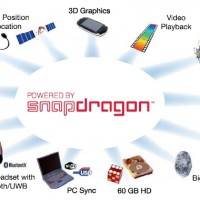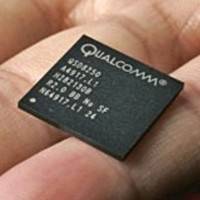
Qualcomm has made a major league splash at MWC this week with a broad range of announcements designed to make mobile platforms faster and more powerful. Here’s how they break down and why you should care:
- Qualcomm Announces Quad-Core Snapdragon for Next Generation Tablets and Computing Devices: That’s right, quad-core. We’re talking PC power in a mobile chip. Why care? How about raw speed? The APQ8064 quad-core Snapdragon chipset has been designed to meet the requirements of next generation tablets and computing devices, achieving speeds of up to 2.5GHz per core and minimizing power consumption and heat generation to enable new, thin and light form factors.
- Qualcomm Announces Commercial Availability of Gobi3000 Modules: Why care? The next-generation embedded Gobi3000 certified reference design provides a combination of performance and flexibility enhancements, extending wireless leadership to multiple forms of connected devices. Gobi3000-based modules are now available from Huawei, Novatel Wireless, Option, Sierra Wireless and ZTE.
- Qualcomm Announces Chipset with Support for Next-generation Release 9 HSPA: Why care? Download speed is everything in mobile devices and the new Mobile Data Modem (MDM) will support HSPA+ Release 9, the latest version of the popular mobile broadband standard, incorporating technology enhancements that help the chipset deliver data rates of up to 84 Mbps on the downlink. The MDM8225 will be fabricated using the 28nm technology node.
- Qualcomm Announces Next-generation Snapdragon Mobile Chipset Family: Why care? Again, the need for speed. The new processor micro-architecture in the next-generation Snapdragon will offer speeds of up to 2.5GHz per core and delivering 150% higher overall performance, as well as 65 percent lower power than currently available ARM-based CPU cores. These chipsets will be available in single-, dual- and quad-core versions and include a new Adreno GPU series with up to four 3D cores, as well as an integrated multi-mode LTE modem.
- Qualcomm Delivers a Faster Mobile Broadband Experience with New, Higher Speed LTE Devices: Why Care? In addition to speed, there will also be backwards compatibility. Why care? The new Mobile Data Modem (MDM) chipsets, the MDM9625 and MDM9225, will support the LTE FDD and LTE TDD UE Category 4 mobile broadband standards, which offer peak downlink data rates of up to 150 Mbps. The chipsets will also be compatible with previous generations of LTE and other wireless broadband standards, giving consumers an uninterrupted broadband data connection on nearly any network around the world. The chipsets will be fabricated using the 28nm technology node.
- Qualcomm Introduces 28nm Mass Market LTE/DC-HSPA+ Chipsets for Mobile Broadband Products: Why care? The new chipsets are anticipated to further drive broadband data products into the mass market on 3G and 4G networks, worldwide. The next generation MDM9615 will support LTE (FDD and TDD), DC-HSPA+, EV-DO Rev-B and TD-SCDMA, while the MDM8215 will support DC-HSPA+.
- Qualcomm Demonstrates New Telematics Solutions for the Insurance Market and Commercial Fleet : Why care? The new insurance telematics and driver safety solution for the automobile insurance market and commercial fleet industry provides in-vehicle connectivity for real-time driver feedback and actionable reporting to improve safety. It is now commercially available for the auto insurance market and will be released for commercial fleets in June 2011.
- Qualcomm’s Snapdragon Platform to Help Enable Instant Streaming from Netflix on Android: Why care? Android devices powered by the Snapdragon platform will now have instant streaming of TV shows and movies from Netflix. Snapdragon processors are designed to deliver dynamic performance and media protection features in a turnkey package, allowing the devices they power to more easily pass through the approval process required for Netflix certification. Netflix video decoding is handled by highly efficient dedicated hardware, extending battery life and improving picture quality.
- Xiam Recommendations Technology to Help Power Telefónica’s Personalized Customer Experiences: The integration of Xiam’s recommendation technology into Telefónica’s multi-channel touch points will enable Telefónica to provide its customers with content, services and offers uniquely tailored to their individual needs and interests across all of their connected devices. By identifying relevant and interesting content, Xiam’s technology will help Telefónica address the needs of their more than 300 million subscribers across Europe and Latin America.
As you can see, QualComm is feeling the need for speed as they recognize consumers are more mobile and looking for more power to handle their daily mobile needs. It’ll be interesting to see how these new developments perform in next generation tablets and mobile phones that are just a glimmer in our eyes.













ok how long do i have to wait for an HTC quad core phone to be in my hands…..
By the time this happens nvidia will have their quad core in a phone